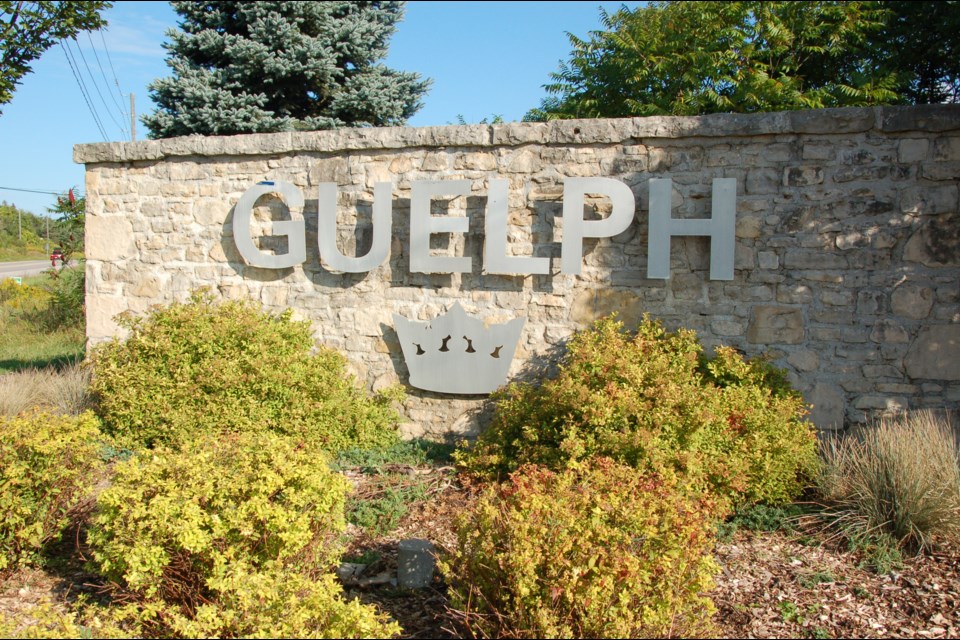The long-term development vision for the city’s south end generally received support during a public meeting on Wednesday evening, though there were numerous suggestions made for changes to the draft Clair-Maltby Secondary Plan.
“It’s been a long process and (the draft plan) certainly has evolved. There’s been a lot of changes,” said Mike Marcolongo, who lives on property within the Clair-Maltby area and spoke on behalf of the Protect Our Moraine Coalition. “The draft plan isn’t perfect, but certainly reflects many of community’s values and aspirations.”
In the years to come, the city’s southern urban boundary is slated to grow into the Clair-Maltby area – about 414 hectares of land in the city’s southeast corner, bounded by the future extension of Poppy Drive West to the north, Victoria Road to the east, Maltby Road to the south and Southgate Business Park to the west.
It’s slated to become predominantly residential lands, with a variety of recreational and retail/service commercial uses, along with a preserved natural heritage system including numerous parks and trails, an active transportation and wildlife overpass on Gordon Street, and more.
If ultimately approved, the Clair-Maltby secondary plan would set regulations regarding residential density, building heights, floor space, housing types, road requirements and transportation plans, among other things.
A 10-hectare community park is part of the plan, along with a minimum of eight neighbourhood parks of about one hectare each.
Delegates raised a number of concerns, but offered praise as well for the work that’s gone into building the plan and the extent to which changes have been made along the way in response to public input.
For Susan Ratcliffe, much of the praise stemmed for efforts to preserve heritage buildings throughout Clair-Maltby, though she encouraged council to use stronger language in the document.
Marcolongo is particularly pleased with the plan’s emphasis on active transportation.
Hugh Whiteley expressed concern about the environmental impact road intersections could have on the area and urged council to eliminate them, as did Marcolongo.
“I don’t believe we can afford this development financially or environmentally,” said Susan Watson, who urged council to focus on development in existing built-up areas, such as Downtown Guelph, the former LaFarge lands on Silvercreek Parkway South and the Guelph Innovation District on the city’s eastern edge.
“Who in their right mind would build an extension on their house while they still have three rooms sitting empty?”
The proposed parkland dedication meets the minimum requirement in the city’s official plan for the lower end of the anticipated population of Clair-Maltby, but falls significantly short if the higher end is achieved, Watson pointed out.
That area is slated to house between 16,300 and 25,000 residents, which accounts for a large chunk of the city’s provincially mandated growth to 2051, when the number of Guelph residents is to surpass 200,000.
In response, Stacey Laughlin, the city’s senior policy planner, explained parkland in Clair-Maltby was planned using a design approach – that everyone lives within a five to 10-minute walk of parkland, which is achieved using the 16,300 population estimate.
However, if densities come in that put the population at the higher end, additional parkland could be added by expanding neighbourhood parks or aspects of the natural heritage system, Laughlin said – something Watson suggested during her delegation would be very difficult to accomplish once development occurs.
Council members noted additional concerns, including the pace of growth in Clair-Maltby, the cost of infrastructure there for existing Guelph residents and the massing of buildings along Gordon Street.
“That’s a lot of pressure on just one street,” commented Coun. Dominique O’Rourke, who represents that area of the city, later adding, “I have no doubt it will be a spectacular, new part of the city.”
As development gets underway in Clair-Maltby, Guelph residents can expect a one per cent tax increase in order to fund operating and capital costs, noted city treasurer Tara Baker, as development charges won’t cover the full cost of infrastructure there.
Existing taxpayers will be on the hook for about $40 million, she said, adding nearly half of that is for parkland above and beyond what developers are required to provide under the Planning Act.
That financial impact is a stated concern for much of council.
Not everyone in council has concerns about density targets along Gordon Street. Coun. Bob Bell and Mayor Cam Guthrie called for the minimum density to be increased from 100 units per hectare to 150 units per hectare, with the maximum building height increased from 14 to 18 storeys.
Monday’s meeting was held to gather public feedback on the draft plan. Council made no decision on the document – that’s expected to happen early next year, following another round of consultation with landowners, stakeholders and others, including council advisory committees.
The draft plan was created following more than five years of technical work and community engagement.
